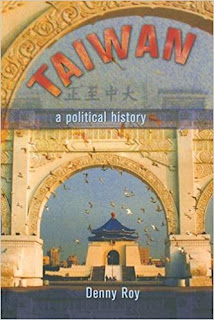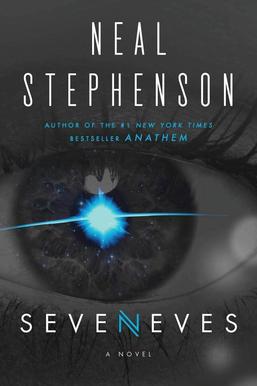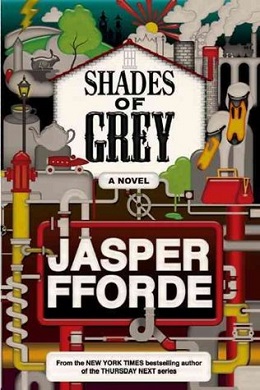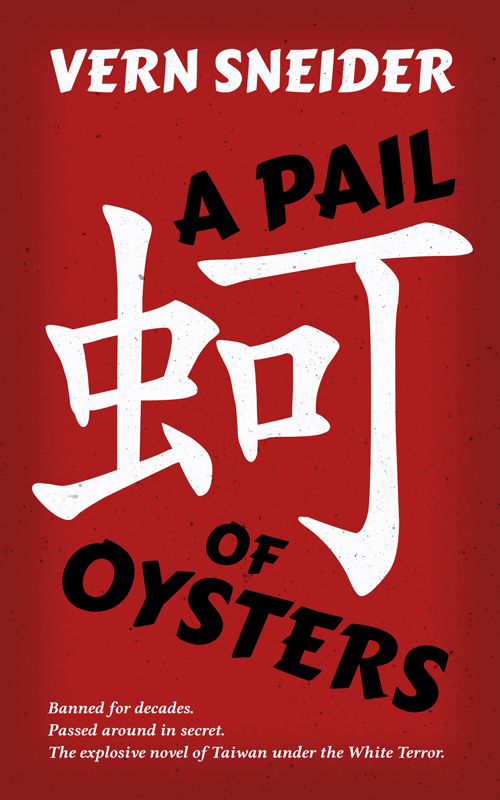 The Grace of Kings
The Grace of Kingsby Ken Liu
Epic fantasy. I’m just going to get it over with and say that I’m going to be making some Game of Thrones comparisons here. It’s not because it’s the only other epic fantasy I know, but rather because it’s the best-known example of a certain sub-genre that Liu’s work also comfortably inhabits. This is a world where magic technically exists but is rarely front-and-center, and where most of our focus is on realistic history-inspired drama of pre-modern politics and statecraft.
For centuries, the kingdoms of the island archipelago of Dara have warred with each other, but in recent years the kingdom of Xana has conquered all of Dara and established centralized rule. Emperor Mapidere’s ruthless conscription of the common people for the sake of vast engineering projects has aroused quite a bit of anger, but many people choose instead to focus on the material benefits that his rule has brought. However, the Emperor is not a young man and his health is poor, so the future stability of the Xana Empire is not assured.
Kuni Garu is a street-smart young man who is quite good at talking his way into and out of situations; Mata Zyndu is a mighty warrior from a noble family, who seeks to avenge the grievous harm that Xana has done to his people. These two characters, among many, many others, populate a narrative that is filled with action and political intrigue.
The supernatural exists but never really comes to the forefront. Dara has a pantheon of deities who like to interfere in the affairs of mortals. (They say they have a rule against direct interference, but honestly that rule seems about as firm as the Federation’s Prime Directive -- that is to say, not at all.) In addition to gods, Dara also has some impressive steampunk technology -- airships, submarines, and all sorts of odd gadgets that the warring factions’ technologists seem able to whip up when needed. I’m not sure why all this technical expertise hasn’t snowballed into a full-on industrial revolution yet, but the worldbuilding nevertheless is intricate and engrossing.
Now, if you want to enjoy this fantastic grand adventure on its own terms, you can stop reading here. I’m not a historian but I am a history geek, and I feel like my impression of The Grace of Kings was somewhat bifurcated. I enjoyed the story at face value, but at the same time this book fully engaged my history geek brain. We’re talking complete nerdery. Why? Here’s why:
People make a big deal of how George R. R. Martin sorta kinda based Westerosi politics on England during the Wars of the Roses. And he did, kinda, sorta. But that’s nothing compared with what Liu has done here.
This is a remarkably direct fictionalization of the collapse of the Qin Dynasty and the bloody civil war that followed, from roughly 215 to 202 BC. Liu has merely transposed the setting from continental East Asia to an insular archipelago, added airships and other technology, and changed all the names. Otherwise, most of the characters correspond to specific individuals who lived 2,200 years ago, and political entities rise and fall as they did in the history books. The history that Liu uses as source material is very well-known in East Asia but much less so in the West; if you’re not familiar with ancient China, you have the privilege of reading a modern work of epic fantasy completely unspoiled, but a half-hour on Wikipedia will give away the broad outlines of the plot. (Where to start: Qin Dynasty. Chu-Han Contention. Have fun from there.)
I have to say that I am very impressed with this, as I’ve never read a work of fiction that adapted history on this scale, with this level of detail. It’s very well-done and the deviations from real history are seamlessly integrated. Of course, Liu's work can be enjoyed completely on its own terms. I personally couldn’t shake the habit of reading the corresponding Wikipedia articles while voyaging through Liu’s book, but that’s merely my own compulsive nerdery, not necessarily recommended for others.
by Wu Ming-Yi
Translated by Darryl Sterk
Atile’i is a young man on the isolated Pacific island of Wayo Wayo. As expected of second sons in this society with limited resources, he leaves his home island forever in a tiny craft, trusting his fate to his people’s spirits. He ends up a castaway on the Great Pacific Garbage Patch, in this world a dense floating island. He struggles to get his bearings on this weird not-really-an-island, but unbeknownst to him the whole thing is floating towards land.
Its target is the east coast of Taiwan, where university professor Alice Shih lives a solitary life, having recently lost her husband and son in a mysterious hiking accident that no one has been able to explain. Other characters include various denizens of rural eastern Taiwan, including natives of the Ami and Bunun Aboriginal tribes.
This is magic realism with a strong ecological theme. To be honest, I still don’t know exactly what is going on in every scene, or what exactly the titular Man with the Compound Eyes is. (A better familiarity with Aboriginal folklore might help.) Fortunately, I do not doubt that if I were to read it again, I would have a much better grasp of the story. I’m willing to handle this kind of ambiguity when I sense there’s an underlying logic that makes sense, which I’ll be able to figure out if I pay enough attention. Wu Ming-Yi doesn’t have to do all of the work for me.
I believe The Man with the Compound Eyes may be the internationally best-known translated novel that’s ever come out of Taiwan. And yet it’s so weird. I love that. What’s more, this is a Taiwanese novel that, while not being overtly political, nevertheless firmly grounds Taiwan in a local identity. Austronesian culture is more relevant to this story than Chinese.
by Ned Beauman
Dark historical comedy. Egon Loeser is a young creative type in 1930s Berlin. A set designer for experimental theater, he is fascinated by Lavicini, a legendary 17th-century stage designer, and the deadly theater accident that involved an elaborate piece of stage machinery that he built, called “The Teleportation Device”.
Unfortunately, Loeser is dissolute, shallow, narcissistic, and uninterested in politics to the point of obliviousness. When he sees a group of Nazis burning books, he takes them for performance artists and cheerfully joins them to chuck a couple of books into the fire and then wanders off, with no idea what he has just taken part in.
Following his crush, beautiful young Adele Hitler (no relation), he travels first to Paris (crossing paths with an American named Scramsfield, an expatriate scam artist even more dissolute than Loeser) and then to sunny Los Angeles, where he eventually bumbles his way into the experimental physics laboratories at Caltech. The leading lights of Caltech’s physics faculty are working on their own high-tech Teleportation Device, which may or may not actually work.
The narrative also thrusts the politics-averse Loeser into both Los Angeles public transport policy and a plot involving Soviet spies. From the local to the international, politics is something he just can’t escape.
The Teleportation Accident was Beauman’s second novel. I read his first, Boxer Beetle, over four years ago after apparently deciding The Teleportation Accident was too expensive for me. Looking back, it seems I felt in his first book Beauman was “attempting to insert as many bizarre things into a narrative as humanly possible and still have it make logical sense”. In his second book, Beauman is more staid and sane as he methodically builds towards a mad and loopy finish.
The two novels share a hovering presence around the outskirts of the speculative-fictional genre and a fascination with 1930s politics and culture. I never really cared about the characters and I wouldn’t particularly want to spend an evening with any of them, but the lively and witty writing style (of a Caltech scientist, he writes “the lenses of his glasses were so thick that, like an astronomer observing Neptune, he was probably seeing several minutes into the past”) and inventiveness of the plot held my interest until the close of the novel’s weird coda.
by Steve Toltz
The Deans are an Australian family of eccentrics. Terry Dean was a legendary criminal. Years after his death, he still looms large in this universe’s version of Australian culture. His surviving brother Martin flits from one off-the-wall scheme to another in order to attain cultural immortality on his own terms -- he doesn’t want to live his life in his dead brother’s shadow. Jasper Dean has the misfortune of being Martin’s son. Having been brought up a prisoner of his dad’s bizarre orbit, he yearns to break free -- he doesn’t want to live his life in his crazed father’s shadow. Martin and Jasper are our two principal narrators, and their story takes us from Australia, to Europe, back to Australia, to Thailand, and finally back to Australia.
I wanted to like this book more than I did. I think the novel’s press is partly to blame for this; I was prepped to expect more of a laugh riot than what I got. The reviewers’ quotes on the cover of my paperback edition proclaim “Riotously funny” and “rampaging and irresistable”; these are not accurate descriptions of the novel, which is slowly-paced and, while very often clever, never becomes laugh-out-loud funny. Comparisons to A Confederacy of Dunces did not help. Not every comic novel whose characters discuss philosophy is A Confederacy of Dunces. This is a shame, because the book’s not bad by any means; it is very good at developing low-key absurd situations, and the character of Martin Dean, as he comes across when Jasper is the viewpoint character, is memorable and well-developed.
The misleading quotes are forgivable, but the problem I have a harder time with is that Martin Dean and Jasper Dean’s narrative voices sounded the same to me. It feels as if it shouldn’t be that way. After all, the plot basically revolves around the personality clash between them. There were times when I momentarily forgot which viewpoint character I was reading, and that really shouldn’t have happened. Maybe this was intentional, to show that Martin and Jasper were actually more similar than they thought? If so, it really could have been signaled better in the text. There’s a lot that’s good about this hefty 700+ page novel, but I feel too ambivalent about it to give it a strong recommendation.

















